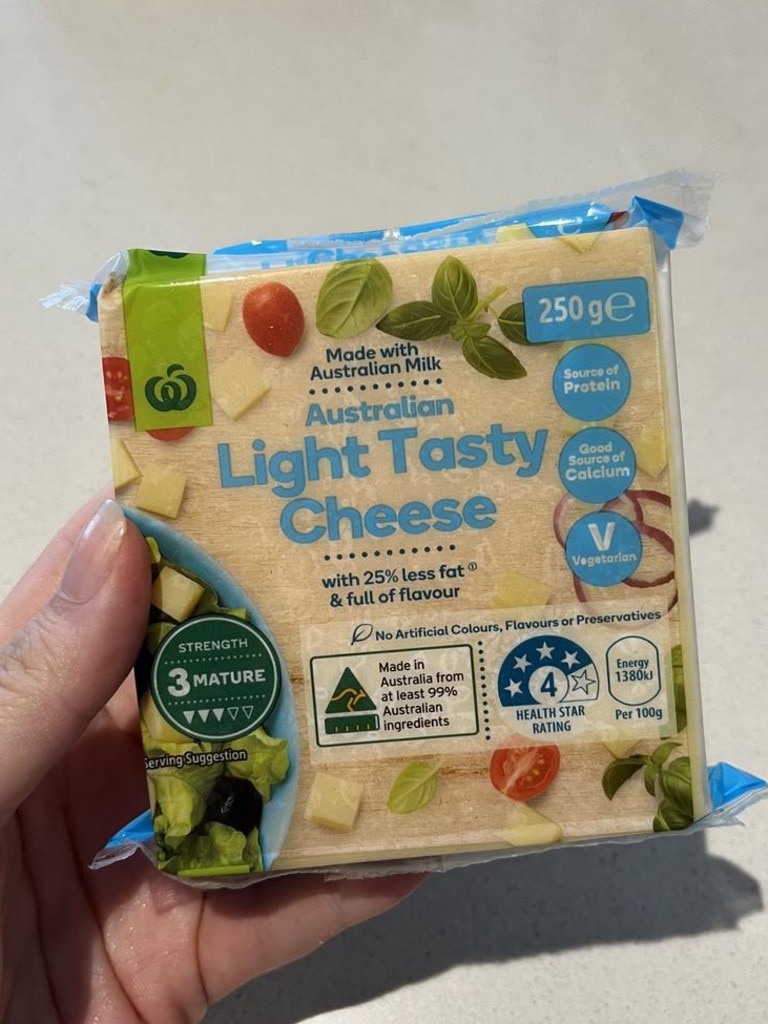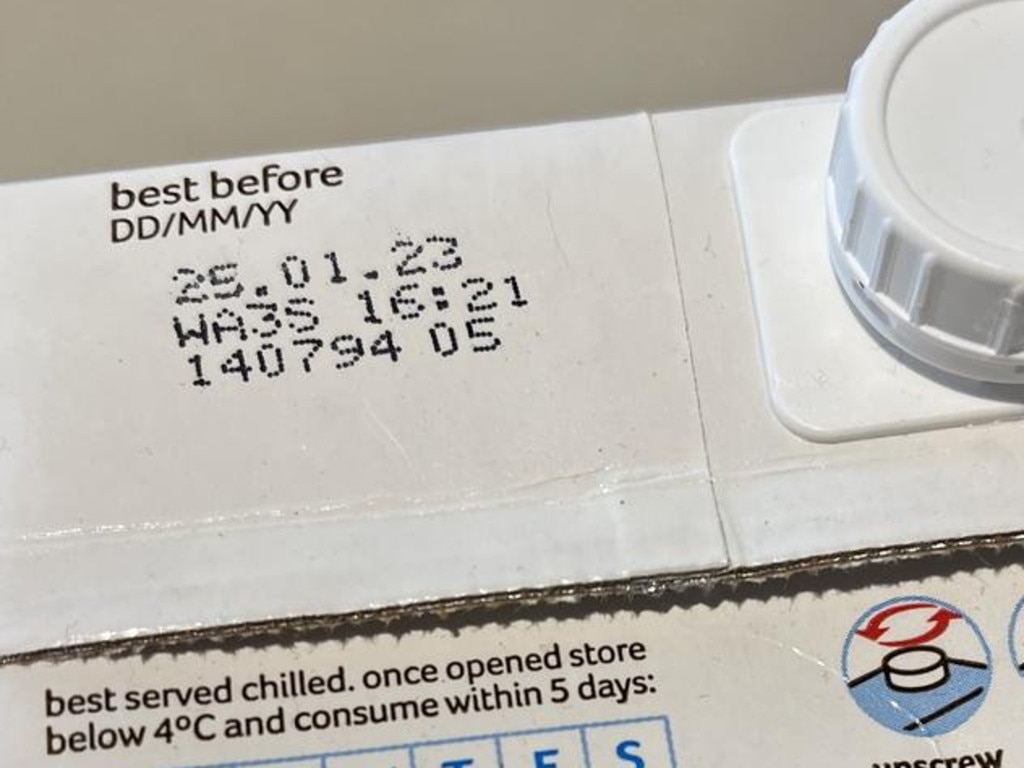Understanding this food label could save you thousands
All our food has one of these labels on it – but not knowing how to read it properly could be costing you thousands each year.
It’s the label printed on most of your groceries – and not knowing how to read it properly could be costing you thousands each year.
As supermarket prices continue to soar – according to recent analysis from investment bank UBS, Coles and Woolworths were running at an annualised 9.6 per cent increase in April (data that Coles disputed) – consumers are searching for ways to cut down their grocery bill, and reduce food waste.
Knowing the distinction between an item’s “best before” and “use-by” dates is a “fairly straightforward” way of achieving both.
“Many consumers don’t understand the difference between ‘best before’ and ‘use-by’. This confusion leads them to throw away tonnes of food that’s still suitable for eating,” University of Tasmania lecturers Louise Grimmer and Nathan Kilah explained in a piece for The Conversation.

![A best before date is used to ‘indicate quality rather than [food] safety’.](https://content.api.news/v3/images/bin/657068717df5d0e3962e4f63158c254b)
For anyone needing a refresher, the use-by date, according to Woolworths, is the one to keep an eye on.
Marked on highly perishable foods, like ready-made meals or protein, “a use-by date signifies when a food must be consumed by for health and safety reasons”.
“Always stick to any use-by date, as expired foods may cause harm or illness, including food poisoning, if eaten. Foods beyond their use-by dates should not be cooked, frozen or consumed and should be thrown away,” the grocery giant said.
“Food may smell and look fine despite its use-by date, however food poisoning bacteria can still be present. Keep to a ‘better safe than sorry’ philosophy.”

On the other hand, a best before date – found on dry goods, canned items and fruit and veg – is used to “indicate quality rather than safety”.
“It may not be unsafe to eat a food past its best before date; you may simply notice that some of its quality, flavour or texture has been lost,” Woolworths said.
“As with use-by dates, following a food’s storage instructions makes sure an item retains its quality for as long as possible.”

![‘The main reason [milk is wasted] is not drinking before the use-by date.’ Picture: NCA NewsWire/Tertius Pickard](https://content.api.news/v3/images/bin/04e49a6eea9e837068033739f89584a0)
In a bid to incentivise shoppers to abide by the latter date, Marks & Spencer last week became the latest major UK retailer to remove use-by dates from its fresh milk.
After potatoes and bread, milk is England’s third most-wasted food – with M&S encouraging customers to embrace the “old-fashioned sniff test” to judge whether their dairy is still drinkable.
“The main reason [milk is wasted] is not drinking before the use-by date,” Catherine David, from sustainability charity Wrap, told The Guardian.
“By changing to a best-before date, M&S is instantly helping its customers save money and cut waste by giving them more time to consume the milk they buy.”

In Australia, research by Wrap and Mayonnaise brand Hellmans last year found that one in three households waste the equivalent of a shopping bag full of food each week – costing them upwards of $2000 each year.
The most-binned items, according to the study, are vegetables (29 per cent), followed by fruit (22 per cent), leafy greens (24 per cent), and baked goods (21 per cent).
Managing director of Wrap Asia-Pacific, Claire Kneller, said Aussies wasted enough food annually to fill the Melbourne Cricket Ground ten times over.
“Half of that happens at the consumption end of the supply chain, where food is eaten,” Ms Kneller said.
“Households throw away between $2170 and $2700 worth of food on average, every year. But our latest research shows that when showed how much money they could save by preventing food waste, the majority said they were going to be more resourceful.”






